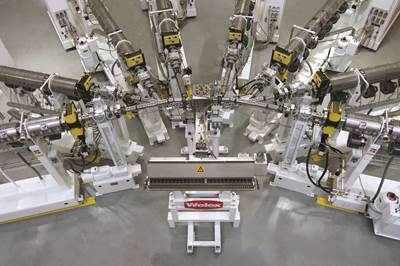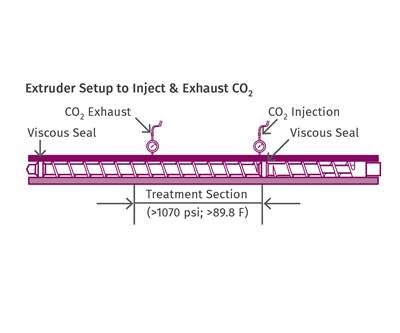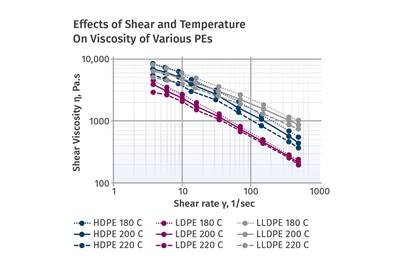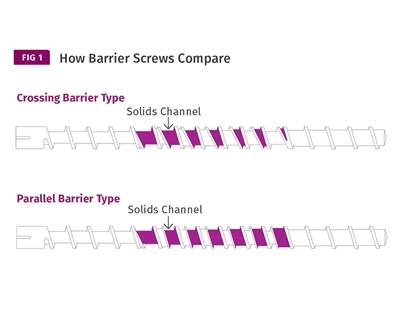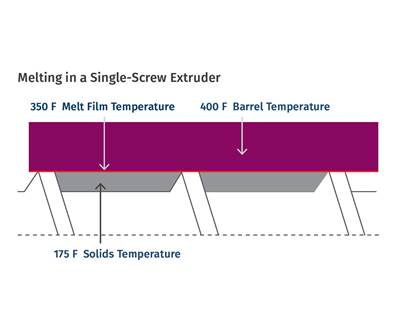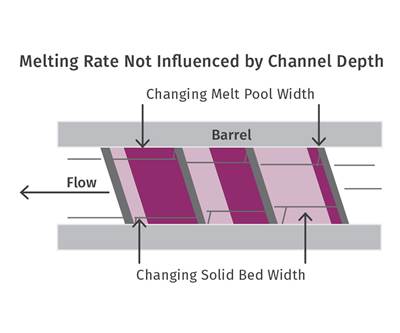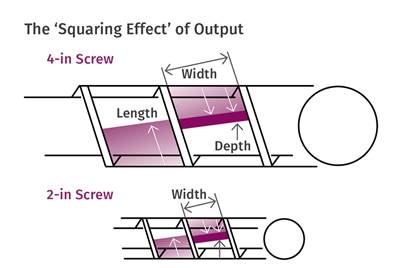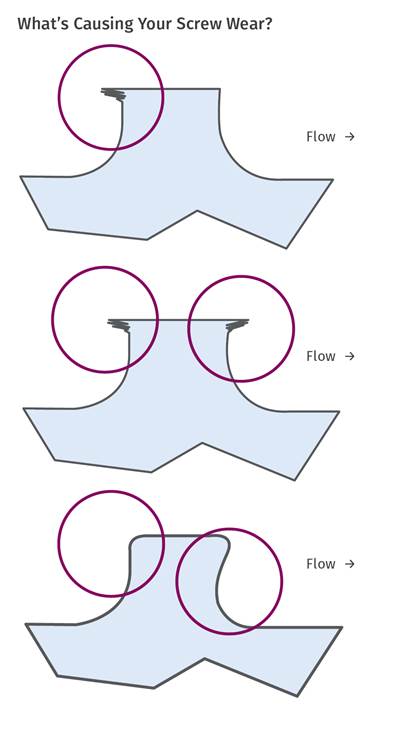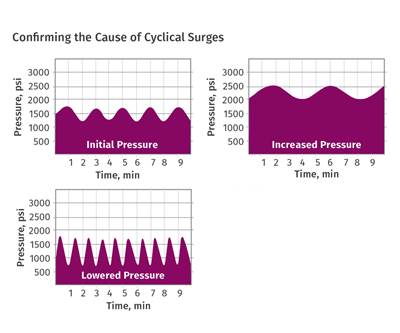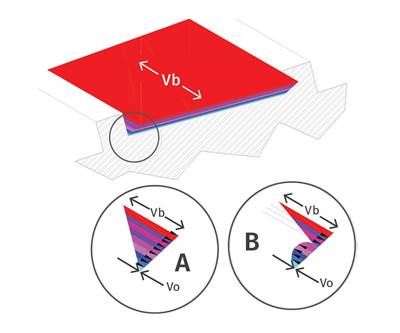Extrusion Know How
What You Need to Know to Get into Coextrusion
Key considerations range from determining the right extruder sizes to tooling, matching material viscosities, and lots more. Take a look.
Read MoreTry This Approach to Clean Up Your Recycled Material
CO2 can be used as a totally “green” solvent to remove many kinds of contamination in recycled plastics without the need for toxic solvents.
Read MoreUnderstanding Viscosity in Extrusion
Both the power-law coefficient and the consistency index must be considered to calculate viscosity.
Read MoreBarrier Screws: Not All Are Created Equal
Let’s take a deep dive into parallel and crossing types and see where each fit in.
Read MoreWhy Barrel Temperatures Have a Small Effect on Melt Temperature
Extruders are not like ovens. Tweaking barrel-temperature profiles will not influence melt temperature all that much. Here’s why.
Read MoreSimple Scale-Up Calculations for Melting
You can avoid complicated melting equations when designing or evaluating a screw by using simpler methods that can save time and provide good results.
Read MoreUnraveling the Complexity of Single-Screw Scale-Up
Variables such as shear rates, melting rate, residence time and conductive heating are all influenced in the scale-up.
Read MoreTelltale Signs of Screw Wear
Determining the cause of wear is the first step in eliminating it.
Read MoreExtrusion: Head Pressure and Output Stability
Use drag- and pressure-flow equations to analyze fluctuating output.
Read MoreExtrusion: A Simple Way to Evaluate Your Screw Performance, Part 2
A hand-held calculator and some basic equations can help determine whether your screw is up to snuff.
Read More